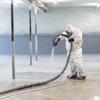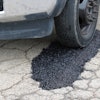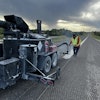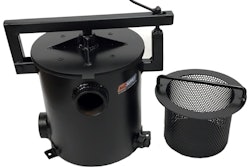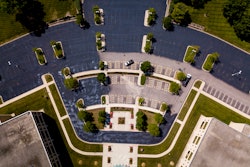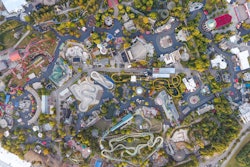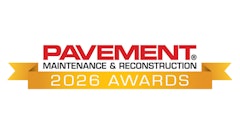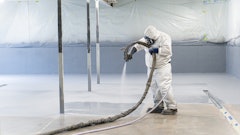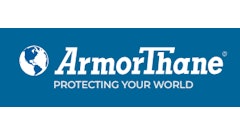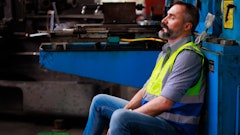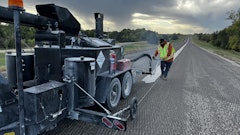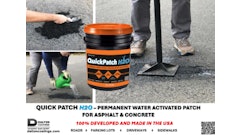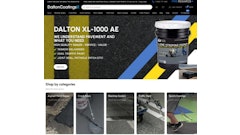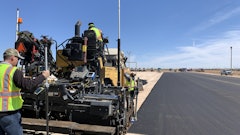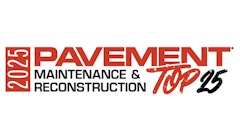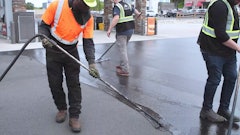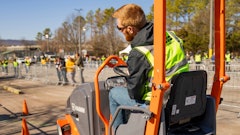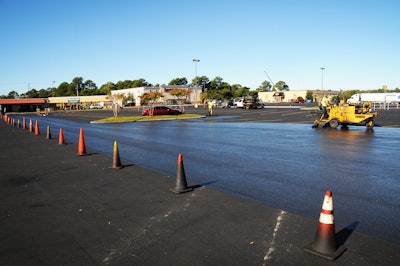
Signing off on a purchase worth thousands of dollars is never easy, especially when buying equipment that ultimately determines whether a company makes it or breaks it in its industry. Successful sealcoating contractors keep their nerves in check by doing thorough research on each equipment purchase.
Consider tank size, pump system and application method when selecting the best sealcoating equipment. By relying on your research, you’ll be able to select sealcoating machine helps you increase productivity, reduce maintenance time, and achieve a faster return-on-investment.
Match Tank Size to Your Business
From the start, determine the best tank size for the application. For primarily small jobs, such as residential driveways or small parking lots, a 750-gal. tank should be enough to complete each project without refilling. However, consider a bigger tank if bread-and-butter jobs are large projects, such as airport runways and mall parking lots.
In conjunction with tank size, consider how to transport the equipment. Being able to easily move it without placing too much strain on a vehicle or trailer is crucial to running an efficient sealcoating business.
So before buying a machine, make sure your truck or trailer has the axle capacity to support the new system’s weight. And when considering the system’s weight make sure to add the weight of the sealer the tank will hold in addition to the weight of the equipment. Sealer generally weighs around 10 lbs./gal., sometimes more depending on the amount of sand in the mix. That means a 750-gal. tank that weighs about 4,000 lbs. empty will have another 7,500 lbs. of pressure on the axle when filled.
If you’re considering a trailer-mounted unit, check the vehicle’s towing capabilities. For a skid-mounted unit, determine the vehicle’s gross vehicle weight rating (GVWR). For example, a skid-mounted unit with a 750-gal. tank will need a vehicle with at least a 15,000 GVWR; a system with a 1,500-gal. tank will likely require 30,000 GVWR.
Selecting the Pump
Professional sealcoating equipment uses one of three kinds of pump systems: Bowie pumps, air-powered diaphragm pumps or hydraulic-powered piston pumps. Each pump functions differently and will directly affect the machine’s productivity, pumping capacity and maintenance needs.
Bowie pumps feature a gear that spins inside of a cylinder. The gear creates suction that pulls liquid into the intake side of the pump, and then pushes it out the discharge side. Typically, these pumps can create enough pressure to move sealcoating mix with as much as 5 lbs. or 6 lbs. of sand per gallon, which covers most mixes. Bowie pumps have been around for a long time, but they are less common than two other types of pumps.
A more common option in the industry is a rubber diaphragm pump, which pulls liquid in as the diaphragm contracts and then pushes it out as it expands. Each pump requires an air compressor for power. Diaphragm pumps handle many types of materials, including water and non-abrasive oils. Most produce enough pressure to reliably pump mixes with as much as 3 pounds of sand per gallon.
A hydraulic-powered piston pump uses pistons to continuously pull liquid in and push it out. Hydraulics produce enough power to pump thicker materials, such as asphalt emulsions and newer modified sealers. That piston power can take on mixes with 15 or more pounds of sand per gallon — mixes that give contractors the ability to take on a wider range of projects.
Consider the maintenance requirements of different pump styles, too, since it impacts time and expense. Piston pumps tend to offer the lowest overall maintenance. The piston design uses leather seals that require no daily upkeep. This translates to consistently high productivity because contractors only have to rinse out a piston pump before long-term storage, such as for winterization. Plus, sealcoating equipment should pump at least 150,000 gallons of sealcoat before leather seals need replacing. Still, it’s a good idea to check the pump once a week to ensure the seals stay lubricated.
Like piston pumps, Bowie pumps don’t require daily maintenance. However, abrasive high-sand mixes and asphalt emulsions can quickly wear down the rotary gear and cause a gap in the seal, which causes Bowie pumps to lose pressure. This requires disassembling the pump and replacing the gaskets and steel wear plates around the seal. These are rather expensive components, which can cost as much as $1,200 to repair or more than $2,000 to replace. Also note that the service interval is much shorter than with a piston pump, resulting in greater cost and downtime.
The lighter diaphragm pumps also require more frequent maintenance. Since diaphragm pumps use rubber seals rather than leather seals or steel plates, those components, while cheaper than a Bowie pump’s steel pieces, must be regularly replaced.
Squeegee or Spray?
After selecting the right tank and pump for the operation, consider the application method: squeegee, spray or both. Each has its advantages, depending on the job and type of surface.
Operators can complete sealcoat-spraying applications faster than applying it by squeegee, which makes it a more common method. Spraying works better on smooth surfaces because it leaves a more uniform finish.
Alternatively, the squeegee method continues to gain more popularity since it applies more material for a seal that lasts longer. It is harder to spread sealer evenly and achieve a smooth finish, so the squeegee method tends to work better for rough or porous surfaces because it can pack the material into the crevices, creating a stronger bond with the pavement.
Of course, an experienced contractor can achieve great results on any type of surface using the squeegee or spray method. But for those wanting options and even greater durability for customers, a sealcoating system with a dual applicator gives the best of both worlds. These machines apply sealcoat via squeegee or spray, giving the freedom to select a method that will yield the best result for each particular job. Also, a dual applicator machine can apply one coat with a squeegee to form a strong bond, and then spray on a second coat for a uniform finish.
Although this method is more expensive and takes more time, the results last 40 percent longer than a job done with a squeegee alone or a double-spray application — saving time and money while earning more referral and repeat business due to a quality job. In addition, few contractors own a dual applicator; therefore, owning one provides a competitive advantage for contractors when bidding on jobs.
The Perfect Partner
No one understands the importance of choosing the right equipment better than business owners. Thankfully, by asking questions and assessing needs, the decision is easy. The right sealcoating equipment is a partner, not a pain. With easy maintenance and maximize productivity features, the right sealcoating machine pays for itself.
Maury Bagwell is the lead engineer at Neal Manufacturing, a division of Blastcrete, which is based in Anniston, Alabama. He has nearly 25 years of experience in manufacturing, sales, product design and engineering. His primary responsibilities include product development, engineering and quality control.

